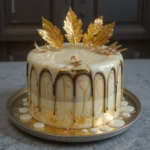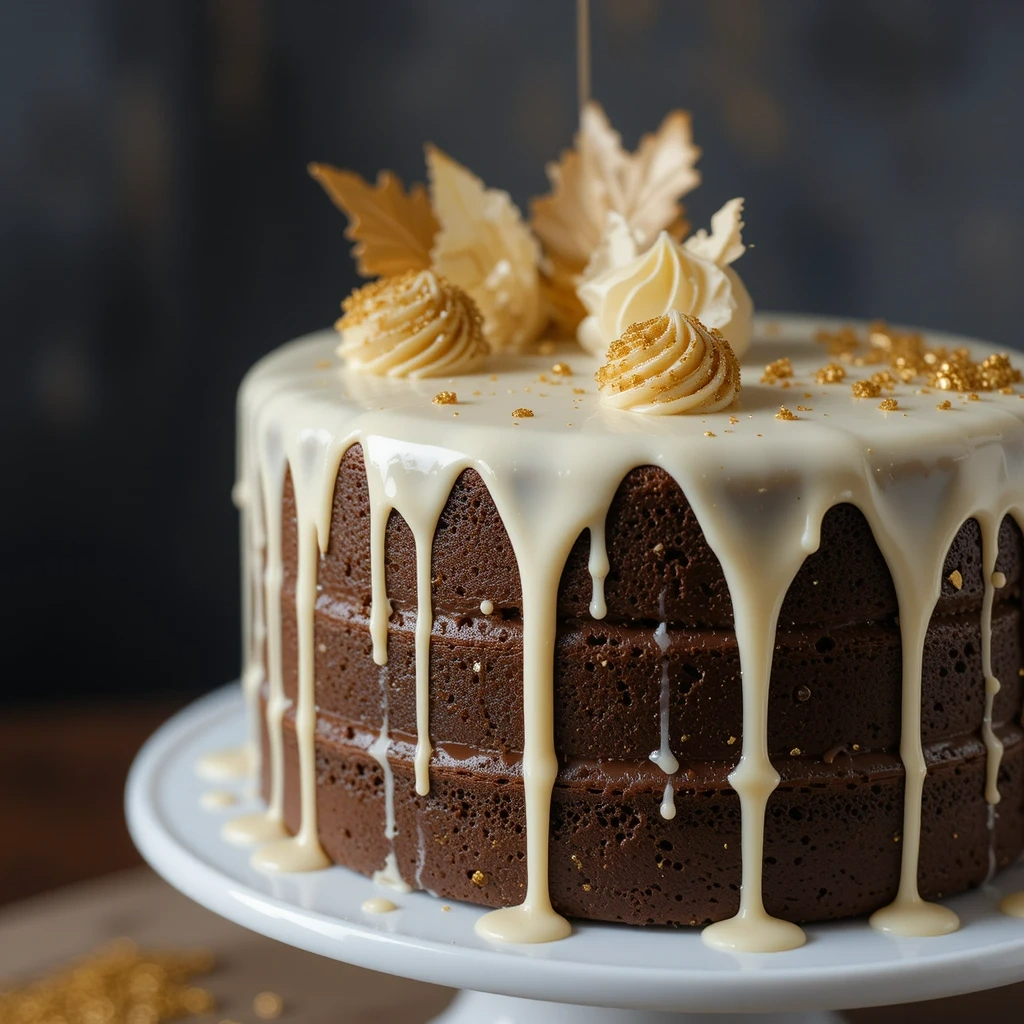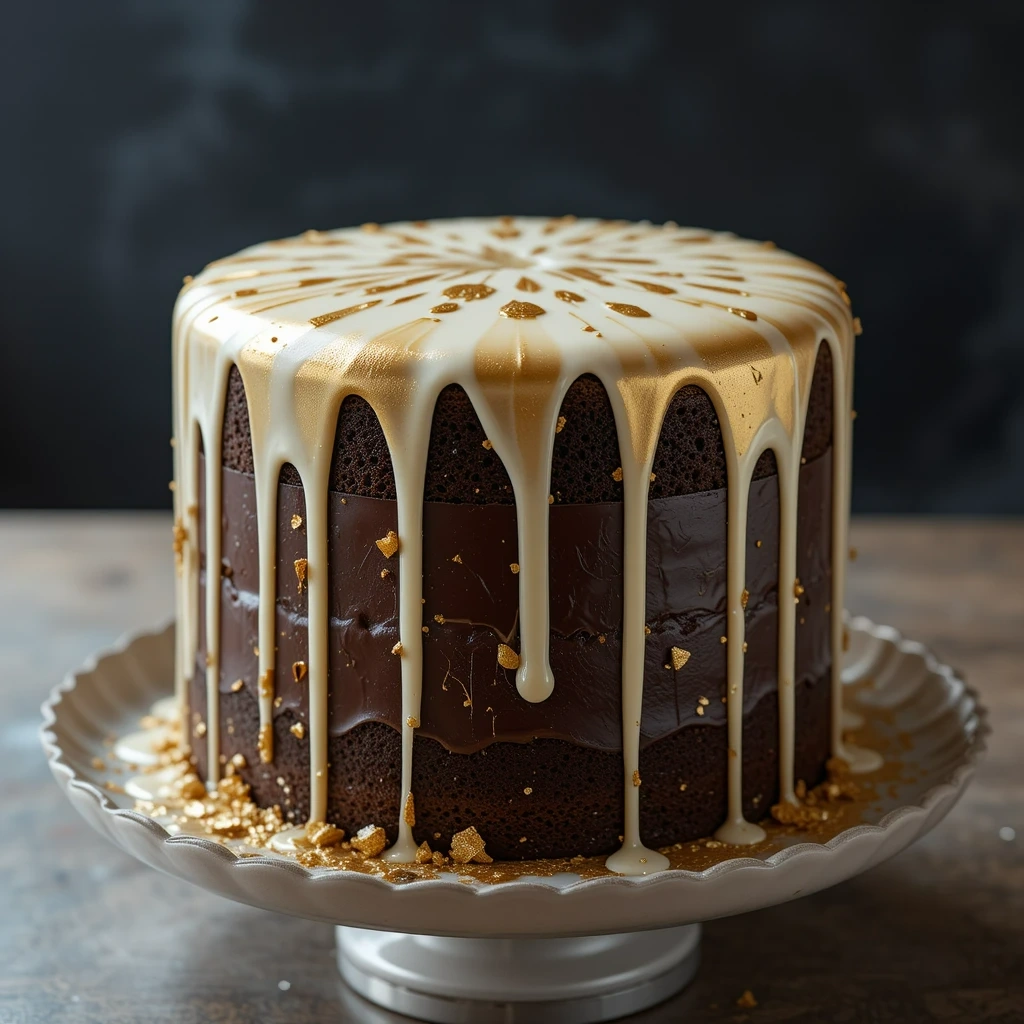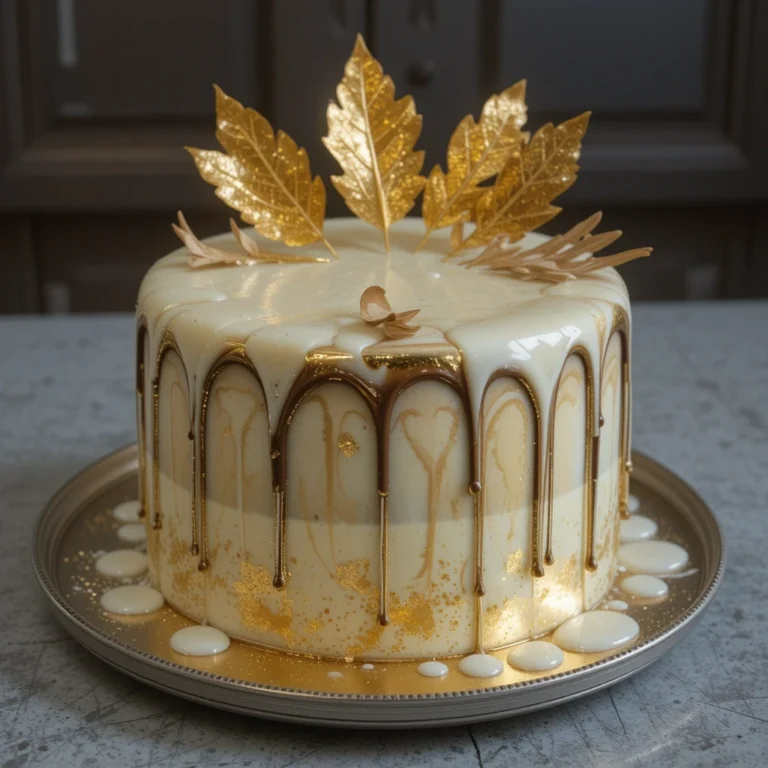American Cake OnlyFans isn’t a social platform—it’s a phenomenon. A whispered term among the ultra-wealthy, a digital speakeasy for dessert decadence, and the nickname for a secretive subculture where luxury cakes are more than dessert—they’re status symbols.
Imagine a cake that costs more than your rent. A confection so lifelike, guests have to be dared to slice it. Hyper-realistic, wildly expensive, and cloaked in exclusivity, these cakes are the crown jewels of an underground baking movement where elite pastry artists operate like haute couture designers. Clients? Think A-list celebrities, crypto millionaires, and influencers who want not just a party centerpiece—but a viral moment.
Dubbed “American Cake OnlyFans” because of its private commissions, no-camera policies, and exclusive client lists, the name hints at its allure—something luxurious, mysterious, and a little outrageous. Most bakers in this realm are independent artists, sworn to secrecy, working out of hidden kitchens or boutique studios with NDAs thicker than fondant.
What fuels this scene? Ego, extravagance, and social media. One jaw-dropping TikTok or Instagram Reel can elevate a cake artist from underground phenom to household name. In a world obsessed with virality, these cakes are built for the feed—shockingly real, deeply surreal, and engineered to break the internet.
Over the next sections, we’ll peel back the fondant on this billion-dollar baking underground—exploring its biggest names, what makes a cake worth $20,000+, and why people are willing to pay Ferrari prices for a dessert they might never eat.
This One is Good Looking for Kids Unicorn Cake
Table of Contents
Table of Contents

American Cake OnlyFans
- Total Time: 45
Description
American Cake OnlyFans isn’t a social platform—it’s a phenomenon. A whispered term among the ultra-wealthy, a digital speakeasy for dessert decadence, and the nickname for a secretive subculture where luxury cakes are more than dessert—they’re status symbols.
Ingredients
For the Cake:
-
- 3.5 cups cake flour (sifted)
-
- 2 cups high-quality cocoa (Valrhona or equivalent)
-
- 1.5 cups European butter (room temperature)
-
- 6 large eggs
-
- 2 cups granulated sugar
-
- 1 cup buttermilk
For the Mirror Glaze:
-
- 1 cup white chocolate (finely chopped)
-
- ½ cup heavy cream
-
- 2 tbsp light corn syrup
-
- 1 tsp edible gold luster dust
Instructions
Step 1: Bake the Cake
- Preheat oven to 350°F (175°C). Grease three 6-inch round pans.
- Cream butter and sugar until fluffy (about 5 mins).
- Add eggs one at a time, then alternate dry ingredients and buttermilk.
- Bake for 25-30 mins, then cool completely.
Step 2: Make the Mirror Glaze
- Heat heavy cream and corn syrup until steaming.
- Pour over white chocolate, let sit 2 mins, then whisk smooth.
- Stir in gold luster dust.
Step 3: Assemble & Decorate
- Stack cake layers with chocolate ganache in between.
- Pour glaze over the top, letting it drip down the sides.
- Add gold leaf accents for a luxe finish.
Pro Tip: “Chill the cake at 34°F before glazing for perfect shine.” – Chef Massimo
- Prep Time: 15
- Cook Time: 30
- Category: Cake
- Method: Bake
- Cuisine: American
The Secret Economy of Luxury Cakes
Behind the scenes, a select group of pastry artists cater to a clientele willing to drop 15,000–15,000–250,000 on a single cake. Unlike traditional bakeries, these creators operate on an invitation-only basis, often requiring referrals or social proof just to book a consultation.
How the Pricing Works:
- Materials: Edible gold leaf, rare ingredients (e.g., Japanese yuzu, Tahitian vanilla), and custom molds can add thousands to the cost.
- Labor: A single cake might take 200+ hours to complete, with teams of artists working on sugar flowers, hyper-realistic textures, or structural engineering (e.g., gravity-defying tiers).
- Exclusivity: Like haute couture, clients pay for the artist’s reputation—some bakers have year-long waitlists.
The Clientele:
- Celebrities: A-list stars commission cakes for album launches, weddings, or PR stunts (e.g., a life-size replica of a Grammy award).
- Social Media Influencers: Viral “cake reveal” videos generate millions of views, making the expense a tax-deductible marketing investment.
- Private Collectors: Yes, some buyers preserve cakes as art, using specialized resins or climate-controlled displays.
Explore more Cake as Cake Flavors

From Royalty to Instagram Fame: A Brief History of Luxury Cakes
1. The Gilded Age (1880s–1920s): Cakes as Status Symbols
Long before Instagram, the ultra-wealthy flaunted their status through ornate, towering cakes. The Vanderbilt wedding cake (1895)—one of the first documented $1,000 cakes—was adorned with real silver leaf and intricate sugar sculptures.
Etiquette Rules:
- The amount of frosting indicated social class (more icing = more wealth, as sugar was expensive).
- Tiered cakes were reserved for aristocracy; the taller the cake, the higher the status.
2. The Mid-Century Shift (1950s–1980s): Fondant & Mass Appeal
Post-WWII, companies like Betty Crocker and Wilton democratized fancy cakes.
- Fondant Revolution (1960s): Wilton’s pliable, smooth fondant replaced buttercream for sculptural designs, enabling sleeker, more modern cakes.
- Celebrity Weddings: The 1980s saw lavish royal and celebrity weddings (e.g., Princess Diana’s 5-foot-tall fruitcake) set new standards for extravagance.
3. The Digital Revolution (2000s–Present): The Rise of “Cake OnlyFans”
Social media turned cake artists into overnight celebrities.
- 2000s: The cupcake craze (thanks to Sex and the City’s Magnolia Bakery obsession) made desserts a lifestyle statement.
- 2010s: TV shows like Cake Boss and Buddy vs. Duff popularized extreme cake design, pushing the limits of edible art.
- 2020s: The rise of private commissions. Top bakers now operate like exclusive content creators, sharing designs only with paying clients or behind paywalls (hence the “Cake OnlyFans” nickname).
The Controversies
This opulent trend isn’t without backlash:
- “Is It Even Food Anymore?” Critics argue these cakes prioritize aesthetics over taste, with some clients admitting they never eat them.
- Labor Exploitation: Behind the scenes, assistants and interns often work grueling hours for low pay while the head baker reaps the profits.
- Sustainability: Waste is rampant—some cakes use non-edible structural supports (e.g., PVC pipes) and are discarded after photoshoots.
The Future of Luxury Cakes
As AI and 3D printing enter the space, bakers experiment with digital designs and edible inks for even more precision. Meanwhile, a “quiet luxury” movement is emerging, with minimalist, high-end cakes that focus on rare ingredients over theatrics.
One thing’s clear: In a world where experiences trump possessions, the demand for over-the-top, Instagrammable desserts isn’t slowing down. Whether it’s a life-size Ferrari cake or a hand-painted portrait of your pet, the American Cake OnlyFans economy is proof that, sometimes, you can have your cake and stare at it too.

Make Your Own “Cake OnlyFans” Style Dessert
Gold Leaf Mirror Glaze Cake (Beginner-Friendly Version)
This simplified recipe gives you a taste of luxury without the $10,000 price tag.
Ingredients
For the Cake:
- 3.5 cups cake flour (sifted)
- 2 cups high-quality cocoa (Valrhona or equivalent)
- 1.5 cups European butter (room temperature)
- 6 large eggs
- 2 cups granulated sugar
- 1 cup buttermilk
For the Mirror Glaze:
- 1 cup white chocolate (finely chopped)
- ½ cup heavy cream
- 2 tbsp light corn syrup
- 1 tsp edible gold luster dust
Instructions
Step 1: Bake the Cake
- Preheat oven to 350°F (175°C). Grease three 6-inch round pans.
- Cream butter and sugar until fluffy (about 5 mins).
- Add eggs one at a time, then alternate dry ingredients and buttermilk.
- Bake for 25-30 mins, then cool completely.
Step 2: Make the Mirror Glaze
- Heat heavy cream and corn syrup until steaming.
- Pour over white chocolate, let sit 2 mins, then whisk smooth.
- Stir in gold luster dust.
Step 3: Assemble & Decorate
- Stack cake layers with chocolate ganache in between.
- Pour glaze over the top, letting it drip down the sides.
- Add gold leaf accents for a luxe finish.
Pro Tip: “Chill the cake at 34°F before glazing for perfect shine.” – Chef Massimo
How the “Cake OnlyFans” Business Works
1. The Commission Process
Getting a custom luxury cake isn’t as simple as placing an order. High-end bakers operate like elite designers, with strict processes:
- Consultation Fee: $300+ (non-refundable) just to discuss ideas.
- Sketch Approvals: 5+ revisions before finalizing the design.
- Ingredient Sourcing: Rare components like Madagascan vanilla or Swiss edible gold inflate costs.
Case Study: A tech billionaire commissioned a $22,000 wedding cake—a life-sized replica of their golden retriever, requiring 80+ hours of labor.
2. The Subscription Model
Some bakers monetize exclusivity through membership tiers:
- Tier 1 ($50/month): Behind-the-scenes videos.
- Tier 2 ($250/month): Live Q&As with artists.
- Tier 3 ($1,000/month): Early access to limited-edition designs.
3. Pricing Breakdown
A single cake’s cost includes:
- Labor (40+ hours): $6,000+
- Edible gold leaf: $850
- Custom silicone molds: $1,200+
Clients aren’t just paying for dessert—they’re investing in edible art with a cult following.
This Keto Ice Cream Bars is very good
The Dark Side of Cake OnlyFans
1. Recipe Theft & Legal Battles
The high-stakes world of luxury cakes has sparked bitter legal fights over intellectual property. One baker filed a $300,000 lawsuit after a competitor stole their signature buttercream recipe. To protect their work, some artists now watermark cake sketches or require NDAs before sharing designs.
2. Baker Burnout
Behind the glamour lies grueling labor—68% of elite bakers quit within three years due to unsustainable pressure. “I worked 100-hour weeks and still got death threats over fondant colors,” admits one anonymous pastry chef. The demand for perfection leads to mental health crises, with many leaving the industry entirely.
3. The Accessibility Debate
Critics compare these cakes to “edible NFTs”—lavish, exclusive, and often untouched. While some clients spend six figures for Instagram clout, others argue it’s a wasteful indulgence in a world where food insecurity persists. The backlash grows as bakers defend their craft, asking: Is it art, excess, or both?autiful but exclusionary.
FAQs About American Cake OnlyFans
1. How Do I Find a Legit Luxury Cake Baker?
Not all “luxury” bakers deliver on their promises. To avoid scams or subpar work:
- Look for ISS (International Sugar Showcase) certification—the gold standard in high-end pastry arts.
- Check their portfolio for published features in magazines like Vogue Weddings or Forbes Lifestyle.
- Demand client references—reputable bakers will connect you with past buyers for testimonials.
Pro Tip: If a baker doesn’t require a consultation fee, that’s a red flag. True artists vet clients as carefully as they’re vetted.
2. What’s the Most Overrated Cake Trend?
Even in elite circles, some trends get eye rolls. Celebrity pastry chef Alain Dubois calls drip cakes “the pumpkin spice latte of pastry—mass-produced laziness disguised as luxury.” Other fading fads:
- Geode cakes (2018’s obsession)
- “Naked” cakes (often criticized as “unfinished”)
- Charcoal-activated desserts (blame Instagram’s goth-food phase)
The current shift? “Quiet luxury” cakes—minimalist designs with hidden complexity, like hand-painted lace or molecular gastronomy elements.
3. Can I Make Money Selling High-End Cakes?
Yes, but it’s not a side hustle. Breaking into the market requires:
- 6+ months of unpaid marketing (staging photoshoots, networking with event planners).
- $10K+ in startup costs (custom molds, premium ingredients, professional lighting for content).
- A ruthless niche (e.g., “cakes for crypto millionaires” or “VIP divorce celebration cakes”).
Reality Check: Most profit comes from private tutorials ($500/hr) or brand collabs, not just cake sales. As one baker put it: “You’re not a chef—you’re a content creator who works in buttercream.”lients.
Conclusion: The Bittersweet Reality of Cake OnlyFans
The world of American Cake OnlyFans is a dazzling yet demanding industry where sugar, art, and exclusivity collide. For elite bakers, it’s a high-reward, high-risk game—charging five-figure sums for edible masterpieces while battling burnout, copycats, and the pressure to constantly outdo themselves. For clients, these cakes are more than desserts—they’re status symbols, viral content, and sometimes even preserved as art.
Yet beneath the gold leaf and Instagram hype lies a polarizing debate. Are these creations culinary innovation or excessive indulgence? A celebration of craftsmanship or a sign of wealth’s absurd extremes? The answer likely depends on who you ask—the baker crafting a life-sized cake sculpture, the influencer dropping $50K for clout, or the critic calling it “the NFT-ification of food.”
One thing’s certain: as long as luxury, social media, and obsession with the extraordinary exist, the underground cake economy will keep rising—one hyper-realistic, jaw-dropping tier at a time.
Challenge: Try the gold mirror glaze recipe and tag us! 🎂✨

